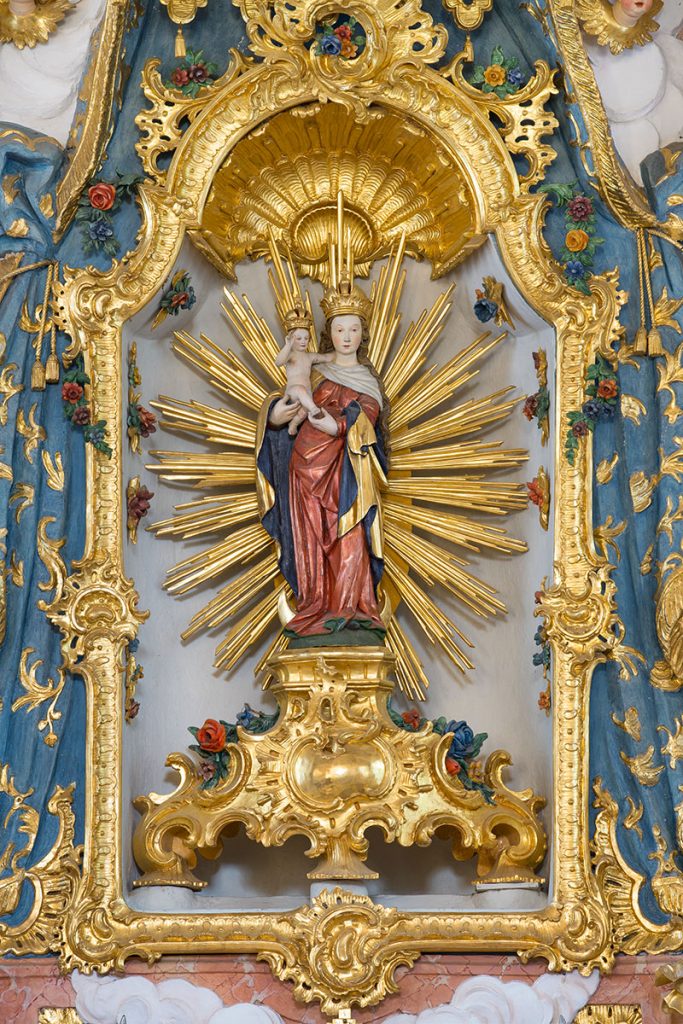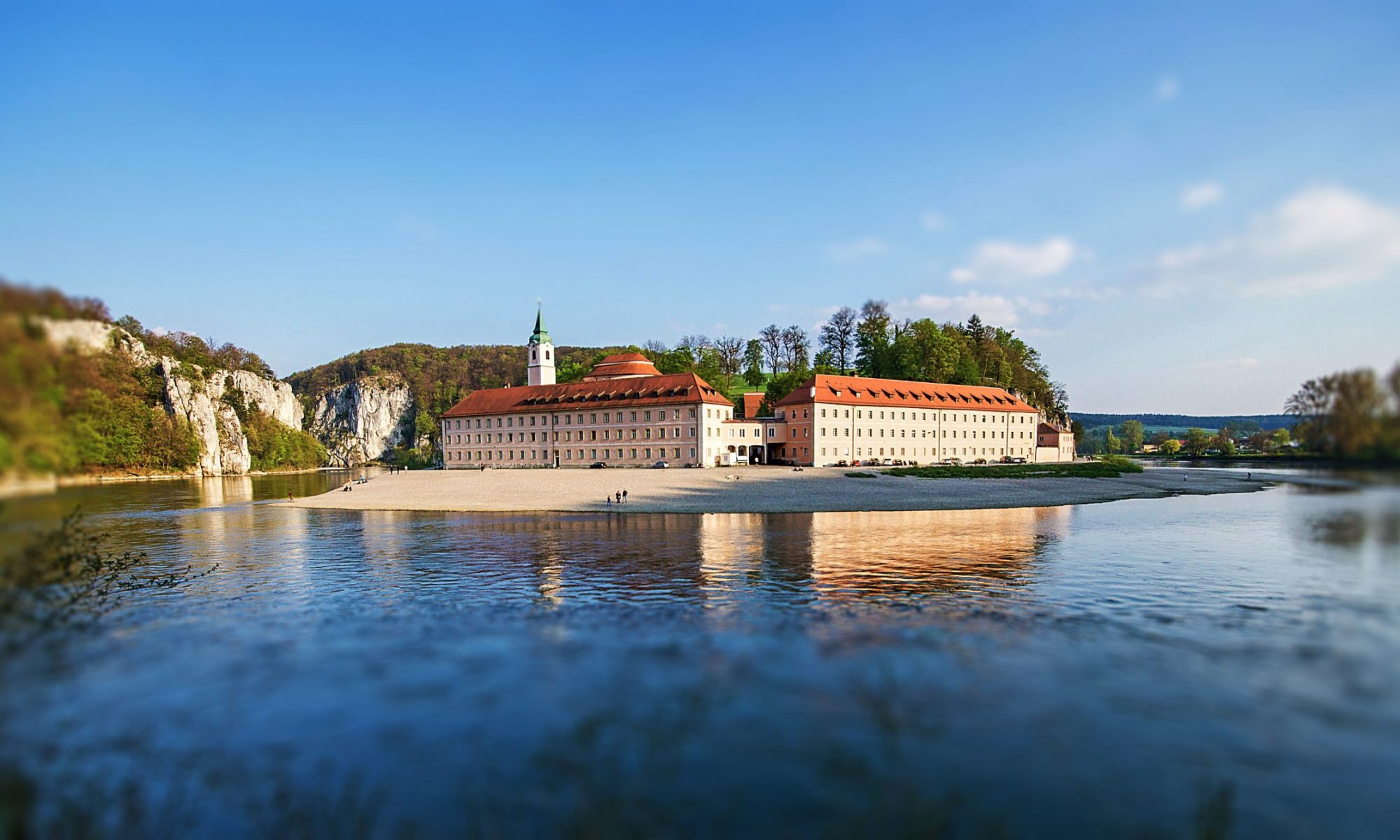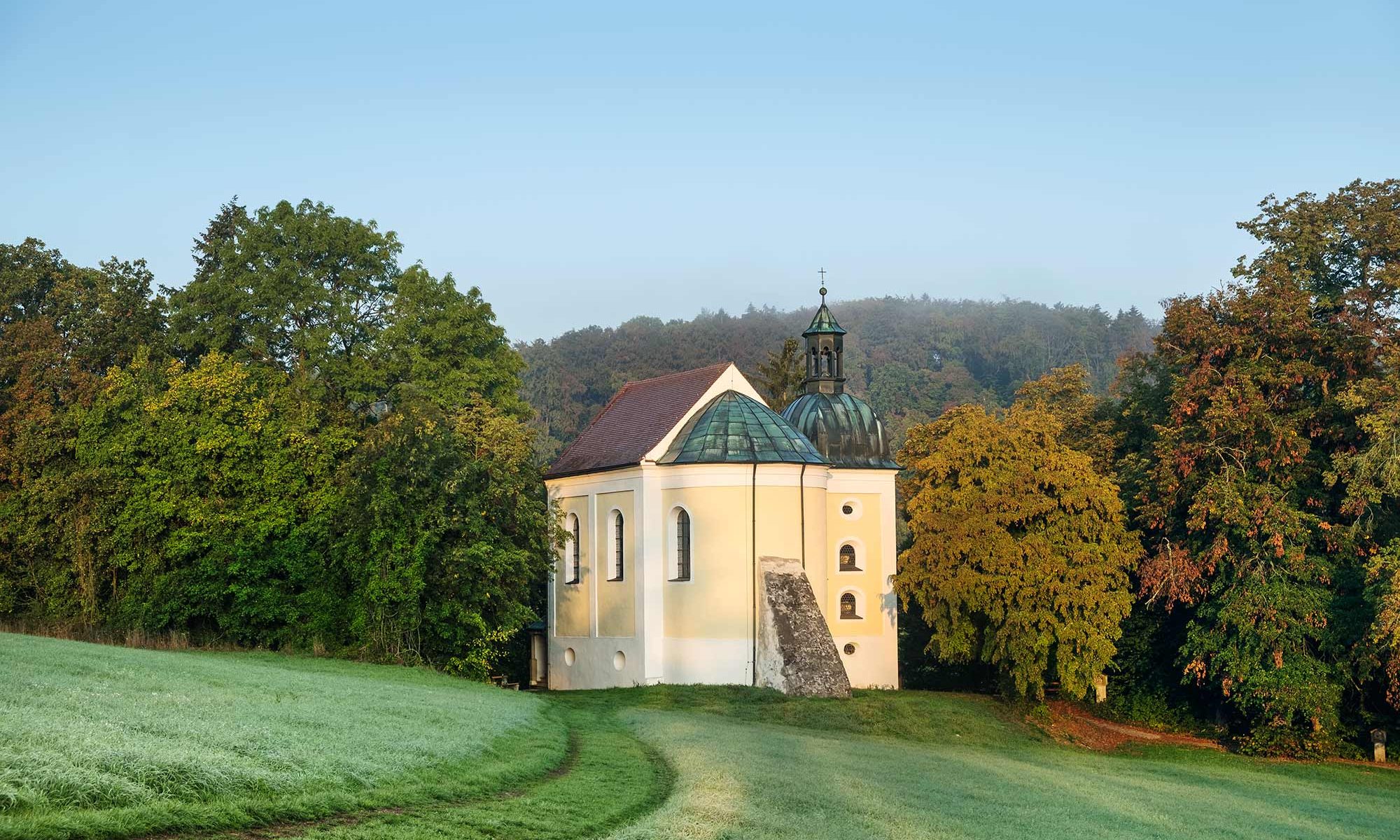
From the abbey church, a short pilgrims’ path with Stations of the Cross by Sr. Dorothea Brockmann (1899–1983) leads to the Shrine of Our Lady on the Frauenberg (Arzberg), an outwardly plain two-storey building. The inscription on the upper gallery of the church, which cites Aventinus, records that in 575, St. Rupert consecrated a chapel built over a Roman temple on this spot. This does not, however, accord with Rupert’s biographical dates, as he died shortly after 716. The most recent series of excavations has established that the chapel was part of a fortified castle erected in the 10th century by the bishops of Regensburg in the wake of the Hungarian invasions. The quarry-stonemasonry in the lower church can be dated to this time. In the 11th century, three altar niches were added to the simple rectangular room of the lower church, and in the 12th century, an additional storey was added. The consecration of a side altar to St. Achatius, recorded in 1358, suggests a phase of refurbishment around this time, and it is to this period that the still extant fragmentary cycle of Gothic images may well be ascribed.
In 1713, Abbot Maurus Bächl commissioned the Kelheim master mason Caspar Öttl to demolish the crumbling upper portions of the church and raise a new structure in its place. The new church was given a flattened semicircular apse in the east and an open staircase in the west, and a squat tower, which was surmounted by a simple dome and lantern and incorporated a sacristy and oratory, was added on the northern side. Unfortunately, the attending crowds caused the lower church vault to collapse during the consecration ceremony in September 1713. A new vault was duly substituted, which is supported by two Tuscan columns.
Compared with the crypt-like lower church, the upper church, with a nave which curves gently in towards the apse, a flat ceiling vault, and rich Rococo decoration dating from 1755, is attractively light and airy. Special features are the stucco marble pulpit, the fiery cartouches with bust images of the “Salvator Mundi” and “Mater Salvatoris” (1580) to each side of the sanctuary arch, the decorated gallery front, and an altar made by F. A. Neu. On this altar, which is framed by columns draped in folds of stucco cloth, stands a Late Gothic statue of the Virgin (1520, later retouched). It replaced the statue which was allegedly donated to the Frauenberg church by St. Rupert, whose figure (identified by the salt pot), along with that of St. Wolfgang (with a church and an axe), flank the Marian image like two watchmen at a shrine. Above the high altar the ceiling vault frescoes, completed by C. D. Asam in 1714, compare Mary with the dawn (a motif taken from the Solomonic Song of Songs) while above the nave St. Rupert – accompanied by Duke Tassilo III and his wife – place Bavaria and the abbey under her protection. The four corner images depict scenes of the successful work of the “Apostle of the Bavarians”: Rupert baptizing the first converts, destroying the pagan temple on the Arzberg and consecrating the new chapel, and finally, the Christian neophytes praying to Our Lady. Between these images, stucco medallions show personifications of faith, hope, and charity – the virtues that enabled Rupert to work so ardently for the Church, which is itself personified in the fourth medallion.


